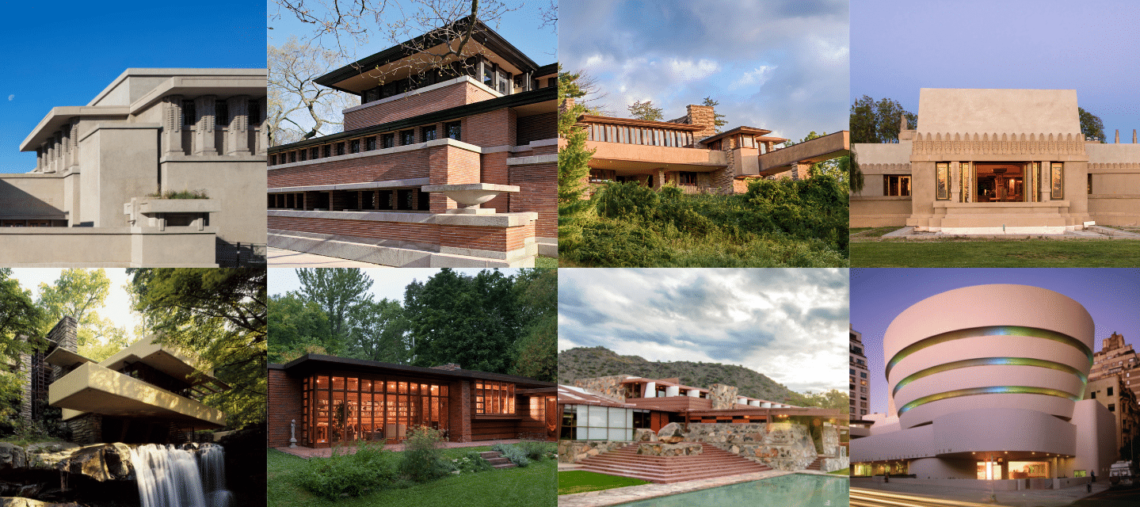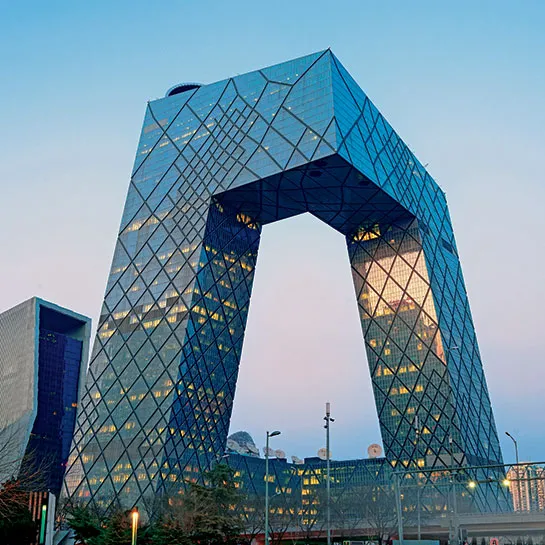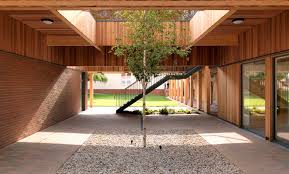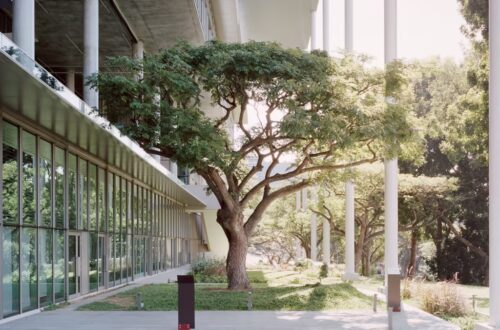
The History of Modern Architecture
“Modern architecture is not a style, it is an attitude”
MArcel Breuer
Introduction

In short, modern architecture is a style of building that emphasises heavily on function. It usually involves sharp, clean lines that strays away from the styles of Victorian, Queen Anne, and Gothic Revival. Modern architects work in ways that focus more on a building’s functionality and utility, rather than its beauty. It is unsentimental, unlike revivalist style, and instead, bears innovation and minimalisms.
Origins
The dawn of modern architecture came at a time where revolutions in technology, engineering and building materials were taking place. When hand-laboured craftsmanship was being replaced by machineries and industrialisation. It emerged at the end of the 19th century with a desire to break away from historical architectural styles and to create buildings that were purely functional and never seen before.
Form follows function
Modern architecture comprises several sub-styles that have taken the span of nearly a whole century. Which is why it can be hard to pinpoint the exact starting point of this widely acknowledged style. However, most architects can agree on one thing: that the birth of the modern style was inspired by the notion that form follows function. This means that the purpose of a building should be the starting point for its design. This concept doesn’t just float around theories regarding architecture, it instead spans over a myriad of other fields of study such as biology, graphic design, product design, writing and so on and so forth.
Louis Sullivan

As the founding father of this key principle of design, Louis Sullivan deserves to be regarded as a ‘father of modernism.’ Form follows function first sprouted in the buildings Sullivan designed for the 1893 Chicago World Fair, which acted as a foundation for a whole network of modern architects to build upon. Furthermore, the Chicago-based architect “lent his unique stylistic vision to the design of the Bayard-Condict, reflecting the significant thought he gave to the beauty of all his buildings” (smarthistory, 2021). The Bayard-Condict building is accepted by architectural historians as the first true skyscraper, which supports his often-regarded title as being the “father of skyscrapers” as well.
Frank Lloyd Wright
Aside from holding the title of a “father of modernism,” Sullivan also was a mentor to Frank Llyod Wright, who followed his path and became a popular pioneer of modern architecture himself. He designed more than 1,000 structures in the span of 70 years and is widely known for being a great originator and a highly productive architect. Arguably, Wright holds the title for the most famous architect of all time, whose ‘Prairie Style’ became the basis for 20th century modern residential designs in the United States.
Other pioneers of modern architecture
Other pioneers of modern architecture include Staatliches Bauhaus, Ludwig Mies van der Rohe, Le Corbusier and Norman Foster, all of whom established long-lasting conceptual ideas in the field, as well as developed infamous structures. Popular examples are those such as The Staatliches Bauhaus, a German art school in the early 20th century that planted the seed for the Bauhaus architectural style. The Villa Savoye also stands to be considered as an important building of modern architecture that was key in the development of the International Style of Modernism.
Bibliography
- Thomann, Lauren. “What Is Modern Architecture?” The Spruce, 18 Dec. 2020,https://www.thespruce.com/modern-architecture-4797910.
- Editors, Wikipedia. “Modern Architecture.” Wikipedia, 18 Oct. 2022,https://en.wikipedia.org/wiki/Modern_architecture#Origins.
- Postal, Matthew, and Steven Zucker. “Soaring Upward, Louis Sullivan and the Invention of the Skyscraper – Smarthistory.” Smarthistory.org, 16 Feb. 2021, https://smarthistory.org/seeing-america-2/louis-sullivan-bayard-sa/.
- “MyBib – a New FREE APA, Harvard, & MLA Citation Generator.” MyBib, 1 Jan. 1970, https://www.mybib.com/#/projects/JWJzaw/citations.





14 Comments
Davidbic
That means you’ll lead some new features and press access to additional channels where you can win visibility, without having to modify mother wit of some elaborate, vade-mecum migration process. https://googlec5.com
секс видео
My website: ебут пьяных
любительское порно русское
Definitely, what a great blog and revealing posts, I definitely will bookmark your site. Best Regards!
My website: любительское xxx видео
arch_inspires
Thank you for your feedback! One should expect more posts soon…
порно домашнее оргазм
Thank you ever so for you blog. Really looking forward to read more.
My website: домашнее порно оргазм
армянки порно
Thanks for sharing, this is a fantastic blog post.Really thank you! Much obliged.
My website: порно узбек
zoritoler imol
Whats up are using WordPress for your site platform? I’m new to the blog world but I’m trying to get started and create my own. Do you require any html coding knowledge to make your own blog? Any help would be really appreciated!
veigram
Nevertheless, it s essential to remember that alcohol can cause the stomach to make more acid than usual tadalafil cialis com 20 E2 AD 90 20Viagra 20Natural 20Casero 20Para 20Hombres 20Instantaneo 20 20Preo 20Do 20Viagra 20Drogaria 20Pacheco viagra natural casero para hombres instantaneo With an offering of this magnitude, some portfolio managerswho measure their performance against a benchmark might considerthemselves as taking on a certain degree of basis risk by notparticipating in this deal, said portfolio manager Bonnie Baha, who heads global developed credit at DoubleLine
https://dewa89.gitbook.io
Hello, i read your blog occasionally and i
own a similar one and i was just curious if you get a lot of spam
remarks? If so how do you prevent it, any plugin or anything you can advise?
I get so much lately it’s driving me insane so any assistance
is very much appreciated.
Have a look at my homepage: https://dewa89.gitbook.io
Reena Veeder
Thank you for sharing excellent informations. Your website is so cool. I am impressed by the details that you have on this website. It reveals how nicely you perceive this subject. Bookmarked this web page, will come back for extra articles. You, my pal, ROCK! I found just the info I already searched all over the place and simply couldn’t come across. What a perfect web site.
buy instagram followers uk paypal
I read this post completely concerning the comparison of newest and previous
technologies, it’s awesome article.
best site to buy instagram followers paypal
First off I want to say terrific blog! I had a quick question which I’d like to ask if you don’t mind.
I was curious to find out how you center yourself and clear your mind
before writing. I have had difficulty clearing my mind in getting my ideas out there.
I truly do take pleasure in writing but it just seems like the first 10 to 15 minutes tend
to be wasted simply just trying to figure out how to begin. Any
recommendations or hints? Cheers!
twicsy review
I like the helpful info you provide in your articles. I’ll bookmark your blog and check again here regularly.
I’m quite sure I will learn plenty of new stuff right here!
Best of luck for the next!
Psychic Entertainment
Hello, Neat post. There’s a problem along with your web site in internet explorer, could check this? IE still is the marketplace leader and a big element of other people will leave out your excellent writing due to this problem.